Expanding Your Horizons
Eclipse: Second Dawn for the Galaxy (henceforth simply referred to as Eclipse) retools the original space-faring 4X game. For many people in the hobby, the words “space” and “4X” are synonymous with Twilight Imperium, the de facto king of the genre. Rather than aiming for a full day or weekend of politicking and gaming, Eclipse condenses the interstellar 4X experience down to a few hours of tight, fraught conquest.
Each game of Eclipse is fairly simple in structure. Up to six players take control of one of seven different civilizations. These include six distinct civilizations with specific strengths and weaknesses, or the “default” Terran civilization on the back of each species’ board. Each turn, you take one of six actions or pass. Play continues the turn around the table until all players have passed, at which point, the next round begins. At the end of eight rounds, the civilization with the most victory points is declared the winner.
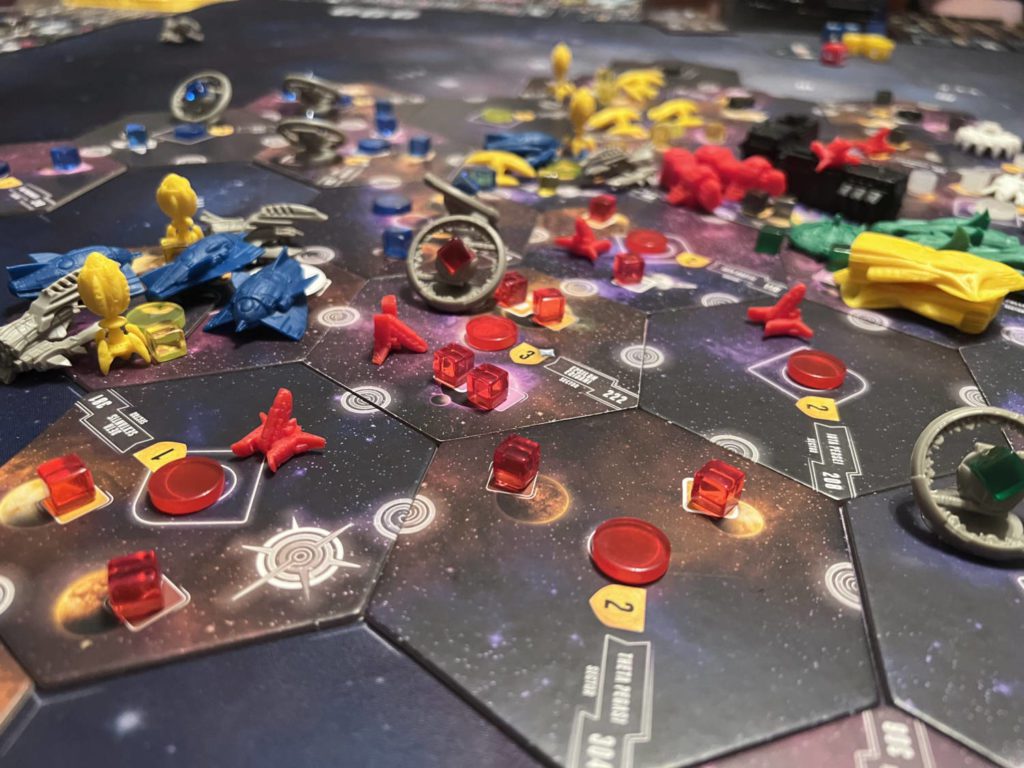
The six actions represent the core paths your civilizations can take to score points.
Exploring allows you to reveal new tiles in the galaxy and place them in strategic ways to either connect to the larger galaxy or seal yourself off and turtle away, and offers the potential of nabbing discovery tiles from most new sectors. These discovery tiles are worth 2VP, but you have the option to spend them immediately for a boost.
Researching nets you fun new technology from the game’s technology board, which gives your civilization an edge in either offensive combat, defensive tactics, or economy.
Upgrading, building, and moving are the three actions directly tied to combat in the game, allowing you to swap out modules on your four ship blueprints, pump out new ships in your sectors, or move ships into adjacent sectors to conquer new lands. Combat is resolved at the end of each round in any sector with more than one civilization present, and usually involves throwing truckloads of colorful dice until one side is obliterated.
The final action, influencing, is used less frequently, but allows you to take control of empty sectors and gain more colony ships to settle new planets. Usually, sectors start off occupied by one player or another, but if and when a player moves away from a sector they occupied, they’re fair game for anyone who wants to go for them.
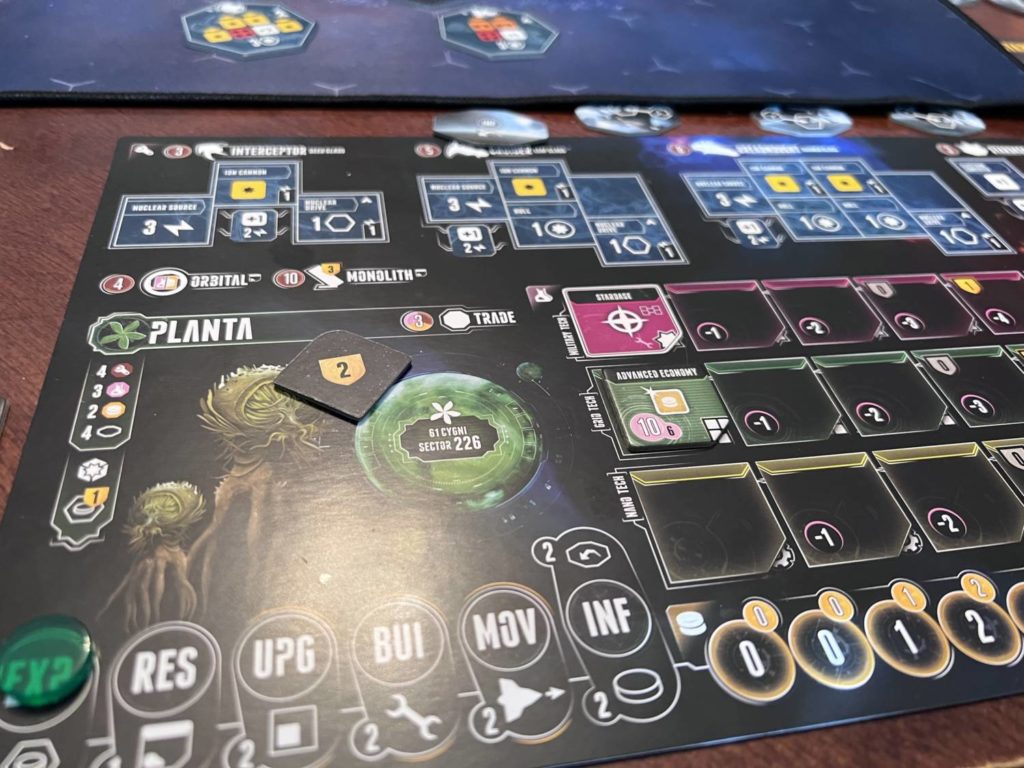
On average, players take two, maybe three actions each round. However, if you want to stretch and go for broke, you can! Eclipse’s action economy is literally that: your civilization’s income/economy correlates directly to how many actions you can take.
At the end of each round, your bill is due, and the more actions taken and planets colonized, the more expensive your bill is going to be. If you stretch yourself too thin, you can plunge your civilization into bankruptcy and be forced to abandon sectors and planets until your economic situation has stabilized. It should be clarified that bankruptcy is not necessarily a bad thing! In Eclipse, it can be leveraged strategically to funnel your economy into different areas by recalling cubes from sectors, or it can be used to tactically expand and mold the board to your liking before making a quick retreat.
Different civilizations gain bonuses for specific actions, and that is where the asymmetrical faction design really shows. The moss-like Planta are adept in exploration to find new worlds in which to grow, while the science-minded Hydran Progress can research faster than others. Your desire for more conquest and exploration must be tethered by your civilization’s economic reality, which means understanding what actions will tax your economy more than others.
Interstellar Eye Candy
Perhaps the most immediately impressive thing about Eclipse is the components. Every player’s individual pieces come in color-coded Gametrayz inserts with matching color pieces. Popping the lid off one of these trays during setup, you’re met with a delightful amount of colorful bits. The translucent colored cubes feel smooth to the touch and sit just perfectly in their indentations on the player board. The small plastic discs used to mark influence and actions are bright and catch your eye immediately. But the pièce de résistance of the player pieces are the four different models of ships. The Planta ships are spindly with thorns and vines flowing off of them while the militaristic Orion Hegemony ships are blocky and minimalist, evoking the brutalist architecture of many government buildings. It would’ve been easy enough to put the same four models in each box and slap a different coat of paint on them, but the ships are all custom-tailored to match each civilization’s theme and species fantasy.
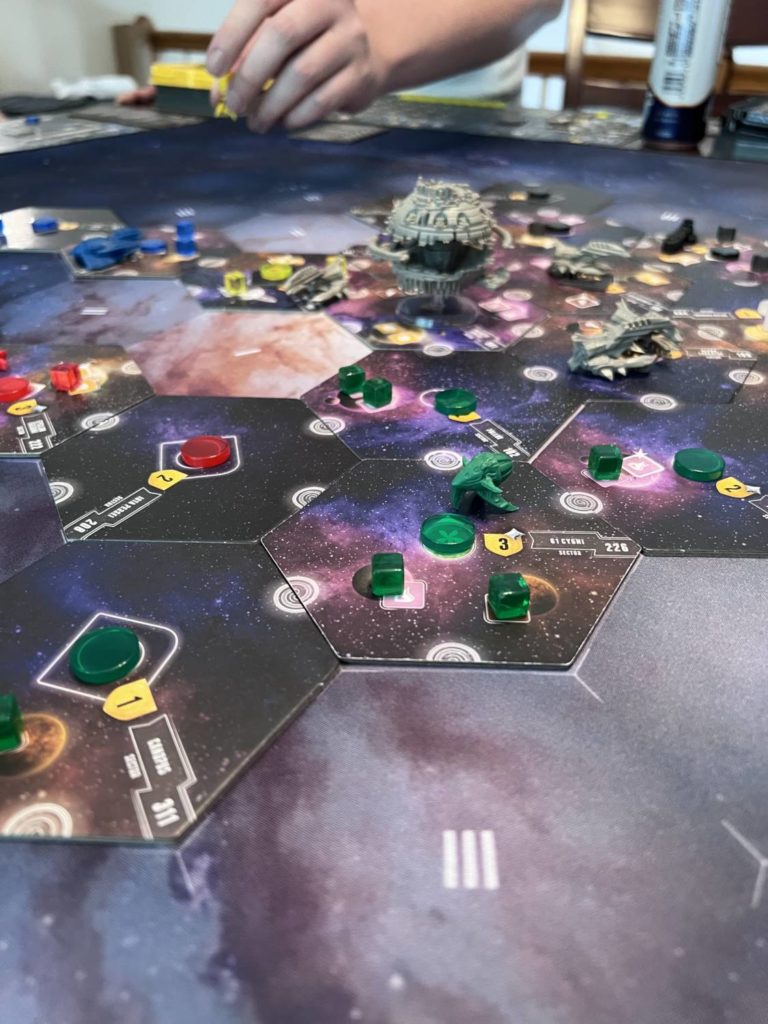
The top of each player’s tray also functions as their civilization’s economy and resource trackers. Three rings sit in the center of each lid with indentations to hold population cubes. As you place population from your rings onto the board via colonization and other methods, the rings track your per-round economy split across the three main resources in the game (materials, science, and money). Each round, when settling your debts from your actions taken, the tracker along the edge of the player boards will track your overall total wealth in each of the three resources. It all just works in such an intuitive way, and it elevates the Gametrayz from a simple storage solution into an elegant, crucial component to facilitate gameplay round-to-round.
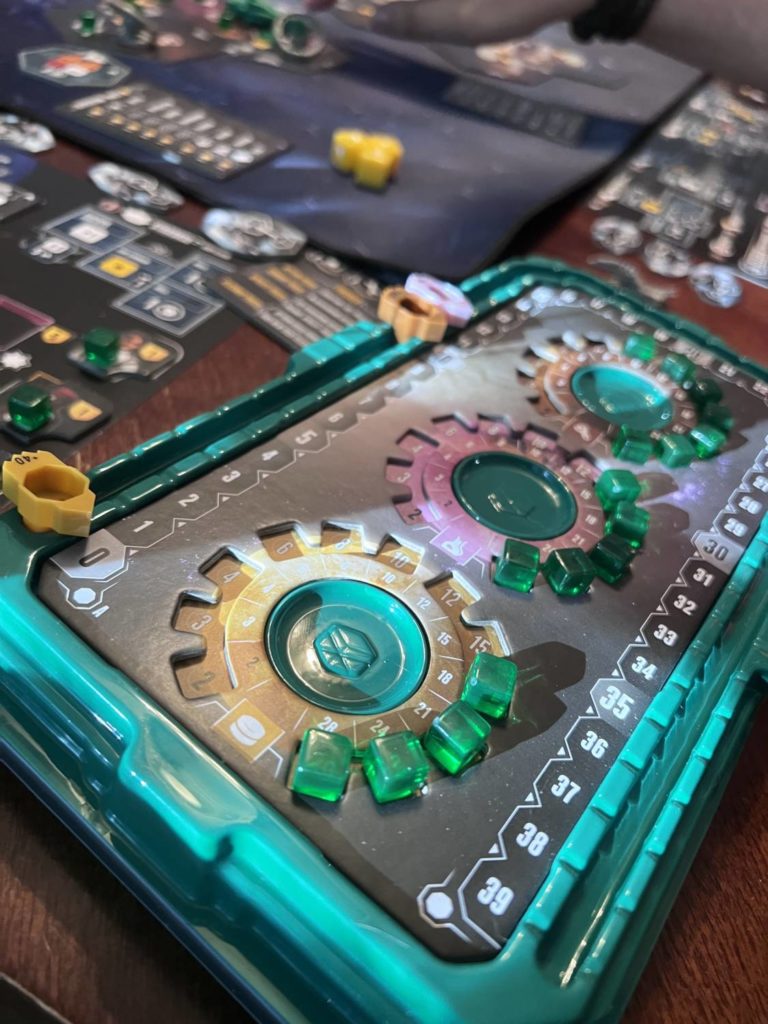
Beyond the player pieces, publisher Lautapelit.fi has made sure every single hex piece, marker, upgrade card, and token has a specific place to fit into the box. There is a separate board to store all the ship upgrade components, which helps speed up downtime in between turns as you can easily glance at the box and grab the component you want. The box includes bags for both the reputation and tech tiles and a separate board for organizing and laying out all the active technologies in ascending order of cost. Perhaps my favorite pieces in the game, however, come from the neutral miniatures. There are NPC ship miniatures for both of the game’s non-playable factions, the Ancients and the Guardians, each with unique designs to fit their flavor. Beyond that, there are monoliths that can be constructed for victory points, and orbitals, spherical constructs that have pockets to hold some of your civilization’s cubes for a boost to your economy. And perhaps most impressive is the gigantic galactic center defense system miniature that sits at the core of the galaxy as an imposing, threatening warning to anyone who dares try to cut through the galaxy’s core for a direct route towards an opponent. The production values are just oozing through every inch of this box, and those who spring for this behemoth will not be disappointed in the way these components pop and shine on the table.
Falling Short of the Final Frontier
Eclipse is a truly massive game but manages to still be moderately accessible. Once you understand what each action does, the game flows fairly smoothly, with only the most extreme sufferers of analysis paralysis prolonging the game’s three-to-four-hour playtime. However, after multiple plays of the game, some of the shine begins to wear off.
At first glance, the seven different factions seem to promise plenty of variety in playstyles. And to some extent, that promise is met! Eridani start with a ton of money and can put together five or six action turns early while people are scraping along with only two actions, Draco is the only faction that can co-exist with the NPCs on the board, and the Mechanema leverage their industrious specialization to pump out cheaper ships in higher quantities. There are actual, practical differences between these civilizations as they are designed – which is why it’s disappointing that actually playing them feels so homogenized.

Having now played each faction at least once, I’ve found that my tableau of technologies, ship upgrades, and territories tends to look fairly similar no matter what civilization I chose at the start. Part of this is because, in Eclipse, there are very few ways to score points. There are a maximum of four reputation tiles from combat or ambassador tiles from forming alliances, all ranging from 1-4 points each. Each sector you control will net you between 1-4 victory points, and most players end with a mid-single digit number of sectors. You’ll score from monoliths you construct (but only one can be built per sector), your progress on each of three tech tracks (ranging from 1-5 VPs and requiring extreme commitment to hit higher VP values), and finally, any discovery tiles you kept for 2 VP instead of their immediate bonus when discovering a new sector. Oh, and the last person who betrays their ally loses 2 VP for good measure.
This is a fairly low-scoring game–at the end of eight rounds, my multiple plays have averaged out to around twenty-five points, usually. Because of this, the game demands that all players participate in all aspects of the game. You need a mixture of combat, technology, and exploration in order to compete, which means no matter what your civilization’s unique bonus might be, you’re going to wind up going broad with your strategy. Similarly, while the technology track seems expansive in the first few plays, it becomes readily apparent that there are some core technologies that you must go for when they pop up. This results in most games ending with the same handful of technologies on your board as must-owns, with a few tertiary techs lingering around the edges to add a small twist to your game.

All of this is compounded by the fact that Eclipse is not very forgiving when it comes to mistakes. Inherently, in a game about rolling dice to randomize combat outcomes, you’re going to encounter some bad luck. Combat in Eclipse, however, can sometimes feel overly punishing. In nearly every game I have played, I’ve watched at least one player commit heavily to combat in the mid-early turns of the game, whiff a few crucial dice rolls, and watch their entire fleet they spent three rounds building up get absolutely demolished. Without fail, that player always wound up near last place by the time eight rounds were done. Eclipse does a very good job of making sure people cannot snowball into a win, as empires in this game are delightfully fragile and easy to topple, but it instead has an almost reverse-snowball effect where one bad break early can ruin the rest of your game. There are no catchup mechanics in place for someone far behind to have a shot to rebuild. In fact, the game slightly incentivizes other players to capitalize on the downtrodden civilization, swooping in like vultures to pick apart the corpse for their own gain. This can lead to complete and total player elimination, something that feels morally bad to do to your friend, but strategically necessary, and that dissonance can be hard to ignore.
Total Eclipse
In the end, the weaknesses in Eclipse: Second Dawn for the Galaxy only really become apparent after nearly a dozen playthroughs. For many playgroups, this is more than enough replayability value to warrant a purchase. To be clear, I am very much the only person in my circle that is beginning to see the cracks in the armor of the game, and that is because I have played it the most. For others who have played less, the promise of strategic variety, the polish and presentation of the components, and the sheer scale of the game are more than enough to justify it hitting the table over and over again. Generally, when games reach this point of saturation for me, it’s time to toss in an expansion or two to mix things up again and increase variety. Luckily, there are two major faction expansions coming for Eclipse later this year that will accommodate even higher player counts, and I am hopeful they will recapture my love for the game.
I opened my review by mentioning Twilight Imperium because it is the holy grail of space 4X games in the hobby, and it sits at a similar price point as Eclipse: Second Dawn for the Galaxy. However, while I enjoy the immersive experience of a marathon game of Twilight Imperium, I also appreciate that Eclipse offers a condensed, more accessible 4X experience that can be enjoyed in a fraction of the time. It’s a game that’s easier to get to the table but still delivers the satisfying intergalactic civilization-building and conflict that I crave. At the end of the day, my life is better when there’s intergalactic civilization mayhem in it than when there’s none, and Eclipse: Second Dawn for the Galaxy may very well be the best box for that experience on the market today.


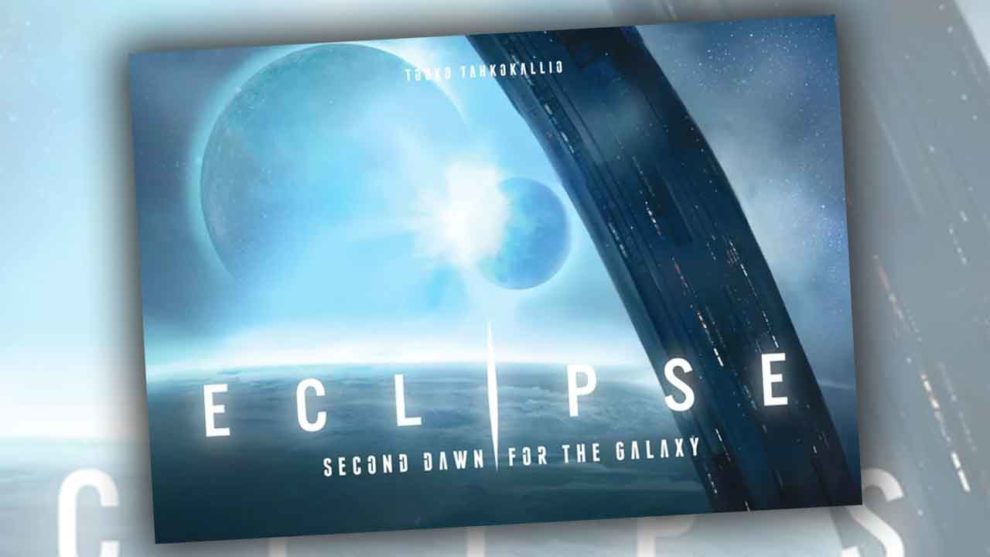

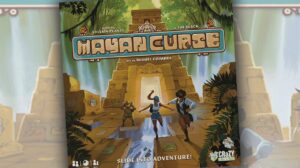







Will, thanks for this thoughtful review, and briefly comparing Eclipse 2nd Dawn with its more established cousin, Twilight Imperium. I’d like to share a few comments regarding whether players feel having both games is redundant.
I think many players will discover that there is room in their collections for both titles, as each one does a few things very well while also retaining some weaknesses. One could reasonably argue that TI4 wasn’t a true 4X game (lacking a formal exploration mechanic) until the release of the marvelous Prophecy of Kings expansion which revised the prior Distant Suns “module” from an earlier TI3 expansion. TI4 tends to be memorable for its player participation, negotiations, strategy card structure and the fact that the Agenda phase has the potential to introduce new rules which can radically shift the fortunes of various participants. TI4 rewards a focus on scoring objectives, and those players who approach it as “space Risk” are not likely to win (although I’m confident that they will still have a good time). And, of course, it’s long. Very long. Long enough to require lunch preparation, several trips to the restroom and perhaps an opportunity to have a bank CD mature.
Eclipse 2nd Dawn tends to be more of an economy game, as players must be disciplined in balancing their resource collection with action expenditures lest they bankrupt themselves (which in my experience is the most frequent cause for player self-elimination). Whereas TI4 has a pre-defined tech tree, Eclipse offers a significantly more granular experience with players fine-tuning their ship blueprints to optimize speed, strength and/or resilience in combat as well as a multitude of of infrastructure advances. Unfortunately, combat can be disproportionately influenced by RNG outcomes despite having a “solid combat ship”, and there’s something less than pleasant about being repeatedly attacked by swarms of relatively cheap missile-laden interceptors that stymie your exploration progress. There’s very little diplomacy in Eclipse (save for the Ambassadors if one elects to include them in higher-player count games) and the VP system is weakened by the RNG effect of pulling-chits-from-the-bag despite an uncontested battle victory (this mechanic also promotes early aggression to try maximize your statistical chances of getting the rarer 3 and 4 point VP tokens).
Despite its flaws, Eclipse 2nd dawn is the more approachable format for players that fills that particular space epic itch without having your hair turn gray during a game. The production quality is outstanding, and the Game Trayz organizers are the Holy Grail for players who appreciate a functional and aesthetically pleasing insert- which is something that Twilight Imperium, over its various incarnations over 25 years, has yet to do for the convenience of its dedicated player base.
Fantastic review, Sir. 🖖
Very good review! Eclipse remains a favorite of mine, although I do not get to play as much as I would like and I have not yet upgraded to the Second Dawn edition.
Would you say it is worth the cost of the upgrade?
Hey there! I never played the original Eclipse so I can’t compare to that, but the components here are absolutely gorgeous and the player trays are a joy to play with. If you have the funds, I don’t see why not!